Impact of Tariffs on IT
- Tommy Wald
- Mar 28
- 3 min read
Pricing up, availability down.
The word “tariff” is not my favorite word…contrary to the opinion of President Trump. The recent tariff policies introduced by President Trump are poised to negatively affect the pricing and availability of essential IT equipment, including computers, laptops, and networking devices.

It’s important to understand the impact of these tariffs so you can make informed decisions and mitigate the potential impacts on your operations.
Understanding the Tariffs

In early March 2025, the Trump administration implemented a 20% tariff on a broad range of Chinese imports, encompassing many technology products vital to business operations. This move is part of a broader strategy to address trade imbalances and encourage domestic manufacturing. However, for businesses reliant on affordable technology solutions, these tariffs present immediate challenges.
Impact on Hardware Costs
The tariffs are expected to lead to noticeable price increases across various tech products. For instance, laptops, desktop computers, and networking equipment, predominantly manufactured in China, are directly affected.

Industry insiders indicate that the additional 20% tax has already begun influencing pricing structures, with most companies passing these costs onto consumers. Moreover, the Consumer Technology Association estimates that tariffs could increase the price of laptops and tablets by up to 46%, and smartphones by up to 26%.
Supply Chain Disruptions
Beyond cost implications, the tariffs have introduced uncertainty into the supply chain. The fluctuating nature of tariff announcements has led to stockpiling behaviors among vendors and channel partners. While this may temporarily stabilize supply, it also contributes to market volatility and potential shortages in the future.
Strategies for Small Businesses
Given these developments, small businesses should consider proactive strategies to navigate the evolving landscape:
Assess Current Inventory: Assess your current IT equipment, desktops, laptops, monitors and phone sets. Determine immediate needs and future upgrades. Procuring this new equipment now can help mitigate exposure to rising costs.
Monitor Market Trends: Stay informed about ongoing trade negotiations and tariff adjustments. Understanding the broader economic context will aid in making timely and informed purchasing decisions. Especially given the on-again-off-again nature of Trump’s tariffs.
Adjust IT Budget: Anticipate and plan for increased expenses in your IT budget. Allocating additional resources now can prevent financial strain as prices fluctuate. The budget you have allocated for 2025 may not be adequate in later months.
Consult with RIATA: Engage with our RIATA team to provide equipment assessments and help prioritize IT needs and expenses. This assessment will help guide you in developing an updated IT budget and prioritize your IT spend.
Looking Ahead

While the current tariff environment presents challenges, it's important to remain adaptable. The situation is dynamic, with potential for policy shifts that could alleviate some pressures. By staying informed and proactive, your business can better navigate these changes effectively.
* * * * * *
In conclusion, the recent tariffs introduced by the Trump administration are set to impact the pricing and availability of computers, laptops, and networking equipment. It’s best to adopt strategic approaches to manage these changes, balancing immediate needs with long-term planning and understanding the associated increase in costs.
Contact RIATA today and we’ll help you with assessing your current IT equipment to determine age, warranty and replacement costs for prioritizing your IT budget for 2025.
About the Author: Tommy Wald is CEO of RIATA Technologies, a Managed IT Services Provider headquartered in Austin, TX. He can be reached at TWald@RiataTechnologies.com or (737) 249-9697.


コメント